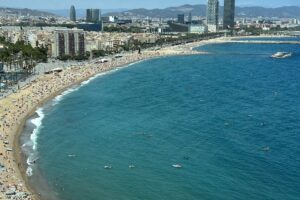Physical Capital: Overview, Types, and Examples
Organisations can help to develop human capital, but the ownership of human capital remains in the control of the owner. On the basis of sufficient knowledge, decision is taken to invest in the physical capital. For this purpose the entrepreneur, finds out the expected returns from the range of investments and then the one, generating relatively higher return is chosen. Therefore, the ownership of physical capital is a result of planned and conscious decision of the entrepreneur.
On the other hand, physical capital refers to the tangible assets and resources used in the production of goods and services. This includes machinery, equipment, buildings, infrastructure, and technology. Physical capital is the result of past investments and represents the accumulated wealth of an economy.
- Human capital is the accumulation of abilities that an employee brings to a company.
- Many construction companies mitigate against these and other generic human capital investment risks by using non-compete competitors.
- Physical assets necessitate a significant amount of capital from entrepreneurs during the earliest stages of production and hence may pose challenges for start-ups.
Human capital encompasses the collective skills, knowledge, experience, creativity, and overall potential of an organization’s workforce. Investing in human capital translates to investing in training programs, educational opportunities, mentorship initiatives, and fostering a positive work environment that nurtures growth and development. A highly skilled and motivated workforce can leverage even the most basic physical assets to achieve remarkable results. Conversely, a lack of investment in human capital can lead to stagnation, inefficiency, and an inability to adapt to evolving market demands. The inputs such as factory, buildings, plant and machinery, raw materials, etc., required for further production are known as Physical Capital.
Resources
Natural resources that come out of the ground, such as the corn needed to make tortilla chips or the iron ore used to make steel, also fall into this category. (B) At central level, Navodaya schools and Kendriya Vidyalayas are playing a vital role in promoting education at this level. Problems relating to development of education in India (i) Large number of illiterates. ‘Entrepreneurs,’ according to some economists, are the fourth factor of production as they put other variables together to create the final product.
Difference Between Physical Capital and Human Capital
Therefore, a balanced approach that prioritizes both human and physical capital is essential for maximizing returns and achieving sustainable growth. Within the field of economics, capital refers to a variety of assets that support production and provide wealth for people, businesses, and economies. Two important types of capital are physical capital and human capital. Understanding the differences between these two is essential to understanding the dynamics of productivity, economic growth, and investment strategies. On the other hand, physical capital encompasses tangible assets such as machinery, equipment, infrastructure, and technology that are essential for production and economic activity.
The multifaceted nature of human capital complicates the calculation of value. For instance, an employee’s value to the company goes beyond their competencies to also include the value of their networks and the corresponding goodwill those networks come with. In this scenario, the standard ROA ratio (Returns on Assets), would not be sufficient in calculating the human capital value. However, it is important to note that the ability of human capital to self-augment is dependent on the health of the employees, training opportunities, and migration opportunities (2). Thus, it is essential to invest heavily in improving health facilities in order to increase the strength and vitality of the employees, as well as their life expectancies.
Management
The formation of human capital is not an industrial process; it is a social one. Additionally, it is also a result of the decision-making of an entrepreneur or manager. Recruitment and training play a big role in building up human capital. In economics, the term ‘physical capital’ is used to denote the inputs (factor of production) or man-made goods, which are owned by the company such as computers, machinery, equipment, tools and so forth. It is used in the production process to enable conversion of raw material into finished goods. On the contrary, human capital is relatively a new concept, which implies the collection of an individual’s skills, abilities, talent, knowledge, etc, used by the company to meet out its long term goals.
- Take a read of the article excerpt that attempts to shed light on the differences between physical capital and human capital.
- This article is a ready reckoner for all the students to learn the difference between physical capital and human capital.
- For this purpose the entrepreneur, finds out the expected returns from the range of investments and then the one, generating relatively higher return is chosen.
- This viewpoint, which acknowledged the critical role that human resources play in promoting economic growth and development, challenged conventional ideas of capital accumulation.
- Human capital is the skills, knowledge, and experience that people possess and that can be used in the production of goods and services.
Having to sell a few dozen desks each time the utility bill came due would get tiresome quickly. We hope this article has helped you understand the difference between human capital and physical capital. Read this article for more information about calculating construction labor costs, which is a key part of measuring human capital. This is achieved through education, training, skills or even life experience. The better prepared a profile is, the better its talent management, the better it will be able to adapt to the uncertainties of today’s markets.
Difference between Formal and Informal
Physical capital is generally bought by a company and it’s used as the company pleases. Human capital is also acquired at a cost but the company has less control over it. Employees with special skills, qualities, and qualifications can eventually choose to leave a company. Employees are often an organization’s most valued assets but there are no generally accepted standards for measuring the value of people.
Physical capital is the tools, equipment, machinery, and infrastructure used in the production of goods and services. It includes items such as buildings, machines, vehicles, and technology. The difference between physical capital and human capital is as clear as day.
The nature of physical capital is tangible, which means it can be seen and touched. It can only be visible through the inputs and outputs of individual employees. Human Capital connotes the experience which an employee takes to the organization in the form of knowledge, skills, abilities, talents, intelligence, values etc. which he/she has accrued over time. As a result, the employees are perceived as an asset, whose value can be increased, by investing in their training and development, like any other asset of the company. In the late 20th and early 21st centuries, as globalization and technological advancement increased, the importance of physical capital kept changing.
It increases when net investment is positive, creating value in the organization and driving economic growth. Physical capital vs human capital are two assets in an organization of different nature, equal relevance and influence in the continuity. On the other hand, specific human difference between physical capital and human capital capital is the education and training which have beneficial values only to the organisation. Physical capital can be separated from its owner, but human capital is inseparable. In other words, physical capital is not bound to a person while human capital is an intrinsic part of a person and cannot be separated from the individual.
Chapter 4: Human Capital Formation in India
Human capital also refers to the network of the employee base and the general level of influence they have on the industry. Theoretically, an attorney would need only an office—perhaps just a desk, even—a phone, and a computer. The relatively small amount of physical capital is the reason, an economist might argue, that law firms outnumber steel manufacturers by a significant margin. These factors include the land or property on which factories, shipping facilities, and stores are built.
Natural capital is the stock of environmental resources, such as land, timber, and waterways, that can be used in the production of goods and services, and be protected and renewed for further use. On the other hand, the value of physical capital can increase in value if the asset itself is upgraded or there are changes to the firm that affect its value. Secondly, physical capital is often relatively illiquid because it is usually designed to fulfill a particular purpose.
Financial capital might exist in large part as electronic entries in a computer database somewhere that denote how much money exists in a company’s checking or savings accounts. One way to describe assets is to break them down into categories, and two broad breakdowns are physical and financial capital. Physical capital is a tangible asset that can be touched in a real sense, while financial capital refers to the legal ownership of assets such as physical capital. Physical capital in construction refers to the tools and machinery that streamline operations, reduce errors, and enhance productivity. Properly maintained physical capital prevents disruptions and ensures projects remain on schedule.












